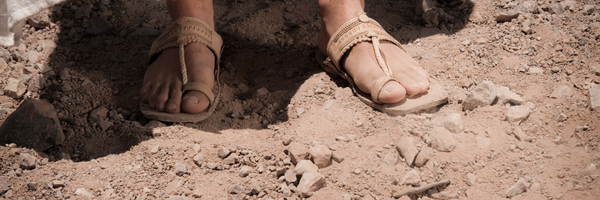The other day, I heard the Lord say to me, shake the dust off your feet.
When Jesus said, “shake the dust off your feet,” He was giving His disciples instructions on how to respond when they encountered rejection or resistance while spreading His teachings. This phrase is mentioned in the New Testament of the Holy Bible in both the Gospel of Matthew and the Gospel of Mark.
In Matthew 10:14, Jesus told his disciples, “Whoever does not receive you, nor heed your words, as you go out of that house or that city, shake the dust off your feet.” Similarly, in Mark 6:11, he said, “If any place will not welcome you or listen to you, leave that place and shake the dust off your feet as a testimony against them.”
This instruction was given to the disciples when Jesus sent them out to preach the message of the Kingdom of God. It symbolizes a gesture of disassociation and serves as a symbolic act of judgment against those who reject the message of Christ. By shaking the dust off their feet, the disciples were symbolically leaving behind any negative influence or spiritual contamination associated with the place that rejected them.
In essence, Jesus was advising his disciples not to waste their time and efforts on those who were unwilling to receive their message. They were to move on and continue their mission elsewhere, not harboring ill will or resentment but trusting in God’s judgment.
It’s important to note that this phrase was specific to the particular mission Jesus gave to his disciples at that time and should not be interpreted as a general principle for all situations. It was a symbolic gesture meant to convey a specific message in that specific context.
The context and meaning behind Jesus’ instruction to shake the dust off one’s feet.
- Cultural and Historical Context: In the ancient Near Eastern culture, shaking the dust off one’s feet was a symbolic action performed by Jews when leaving Gentile territories. It represented a gesture of separation and signified the end of any contamination or association with that place or its people. By using this symbolic act, Jesus was drawing on a cultural practice familiar to His disciples and employing it in their missionary endeavors.
- Rejection of the Message: Jesus knew that not everyone would accept his disciples’ message. In sending them out to proclaim the good news, He warned them that they would encounter resistance, rejection, and hostility. The instruction to shake the dust off their feet served as a response to the rejection of their message. It signified that the responsibility for accepting or rejecting the message had been transferred to the people who refused it.
- Testimony and Judgment: Shaking the dust off their feet was also a testimony against those who rejected the message. It indicated that the messengers had fulfilled their duty by faithfully proclaiming the message of the Kingdom of God, and any consequences resulting from the rejection would be upon those who refused it. The act served as a symbolic judgment against the place or people that rejected the disciples and their message.
- Moving Forward: The instruction to shake the dust off their feet was not an expression of anger or vengeance but a practical directive to keep the disciples focused on their mission. It encouraged them to leave behind the negative experiences and not allow rejection to hinder their work. It reminded them to trust in God’s sovereignty and continue spreading the message to other receptive hearts.
Overall, the act of shaking the dust off their feet was a symbolic gesture with several layers of meaning. It represented separation, disassociation, testimony, and the transfer of responsibility. It allowed the disciples to move forward in their mission without being burdened by the rejection they encountered, trusting in God’s judgment and guidance.
